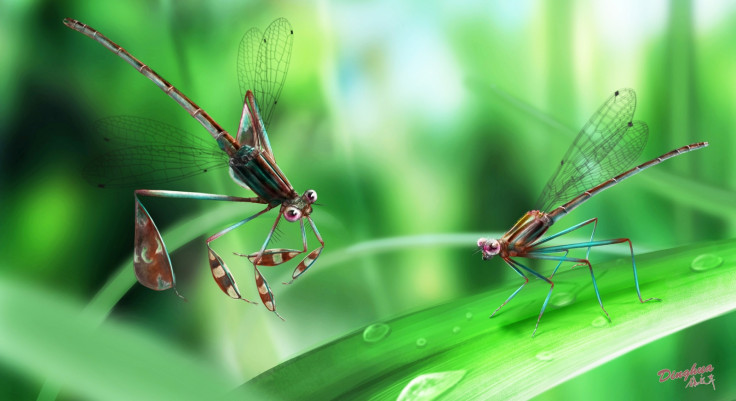These insects have been locked in the throes of passion for 100 million years
Males of an ancient species of damselfly had very fancy legs, which they used to impress females.
Amber specimens from the mid-Cretaceous Period discovered in Myanmar show how male damselflies courted females 100 million years ago.
Social and sexual behaviours like courtship are extremely rarely preserved in the fossil record. There are just a handful of examples, such as a pair of turtles that died and were fossilised in the act of mating.
Now three males of an extinct damselfly species – named Yijenplatycnemis huangi – that died while pursuing females have been described in a paper in the journal Scientific Reports. Damselflies are carnivorous insects that belong to the same group as dragonflies.
The males have large and expanded tibiae – or lower leg structures – which modern damselflies use to attract females as well as to bat away rival suitors. These leg structures are also enlarged in modern damselflies, but they are not as extreme as of those their ancient ancestors. The tibiae of this ancient damselfly was about 6.6mm long and 3mm wide, dwarfing those of even the largest of their modern relatives.
The tibiae also have unusual markings that are thought to be part of the males' mating display. They have two narrow brown bands that make them look a bit like the pigmented wings of other related extinct species.
There are also small eye-shaped spots on the tibiae, which modern-day species also have. The authors suggest that these were also part of the males' mating display, as they are not large or defined enough to be taken for real eyes as a way to intimidate potential predators.
These large and extravagantly decorated tibiae would have made flight very difficult for a courting male damselfly. These mating flights, if anything like those of their modern-day descendants, would have involved fluttering in front of a female to display their legs.

"The exaggerated tibiae probably also made them fly slowly. They probably found it less easy to escape from new predators, thus adding more risk in their fancy flight," write study authors Zheng Daran and Wang Bo of the Nanjing Institute of Geology and Palaeontology, Chinese Academy of Sciences, in the paper.
If a male survived such a difficult flight and avoided predators despite his conspicuous legs, it would have added to his appeal, potentially driving sexual selection for even larger and fancier tibiae.
© Copyright IBTimes 2025. All rights reserved.






















